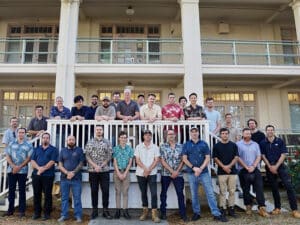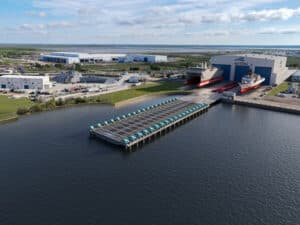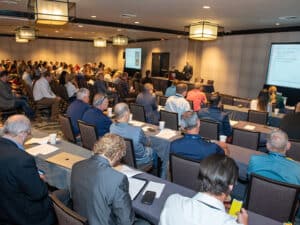
MHI completes modernization of Shimonoseki Shipyard
Written by Mitsubishi Heavy Industries, Ltd. (MHI) has completed the modernization of its Shimonoseki Shipyard in Yamaguchi Prefecture, Japan. The shipyard’s primary markets are coastal-service vessels for Japanese customers and governmental-organization-use vessels.
Mitsubishi Heavy Industries, Ltd. (MHI) has completed the modernization of its Shimonoseki Shipyard in Yamaguchi Prefecture, Japan. The shipyard’s primary markets are coastal-service vessels for Japanese customers and governmental-organization-use vessels.
A ceremony held at the yard today marked the completion of the last in a series of modernization initiatives at the shipyard, the installation of a 300-ton suspension capacity jib crane.
With completion of the modernization program, the Shimonoseki Shipyard will boost productivity in the construction of high-value-added vessels, such as coastal-service ferries, RO/RO ships, high-speed boats and special-purpose vessels.
The 300-ton jib crane and a 150-ton crane newly installed at the 186 m long x 53 m width berth at the shipyard’s Enoura Plant replace four existing aged cranes. Last autumn the plant expanded its general assembly work area beside the berth utilizing an adjoining vacant lot, a reclaimed site which was originally dock No.1. By shifting some of the assembly works being conducted at the berth, which required setup on a high place, to assembly at a fully-equipped ground level site, enhancement of work efficiency has been achieved. Now, in boosting capacity to transfer building blocks and components of ships through installation of a new crane, efficiency in large-component assembly work, which is conducted prior to vessel erection in the berth, has also been improved. By modernization and various work efficiency improvements, the shipyard targets to improve productivity by 15%.
The modernization program at the shipyard began in October 2007 with the launch of a new processing and assembly shop for high-speed aluminum ships at the Enoura Plant. With completion of the new wing, the shipyard has improved the productivity and expanded construction capacity of aluminum ships, such as patrol vessels and fisheries patrol boats. In October 2010 the shipyard completed a blast/painting shop equipped with air-conditioning, dust control and component block transfer systems, along with an expanded general assembly area, at the former No.1 dock site. The new blast/painting shop complies with the new rules for ballast tank coating set by the International Maritime Organization (IMO) and achieves a structure for performing all the work involving painting, including paint surface preparation, of ships’ ballast water tanks in a secure and stabilized environment.
In its 2010 Medium-Term Business Plan for the five years beginning fiscal 2010, MHI has set down a new business strategy for its Shipbuilding and Ocean Development segment. The new strategy includes measures targeting earnings acceleration, cost structure reforms, and entry into large-scale projects and new business fields.
July 6, 2011





Leave a Reply
You must be logged in to post a comment.